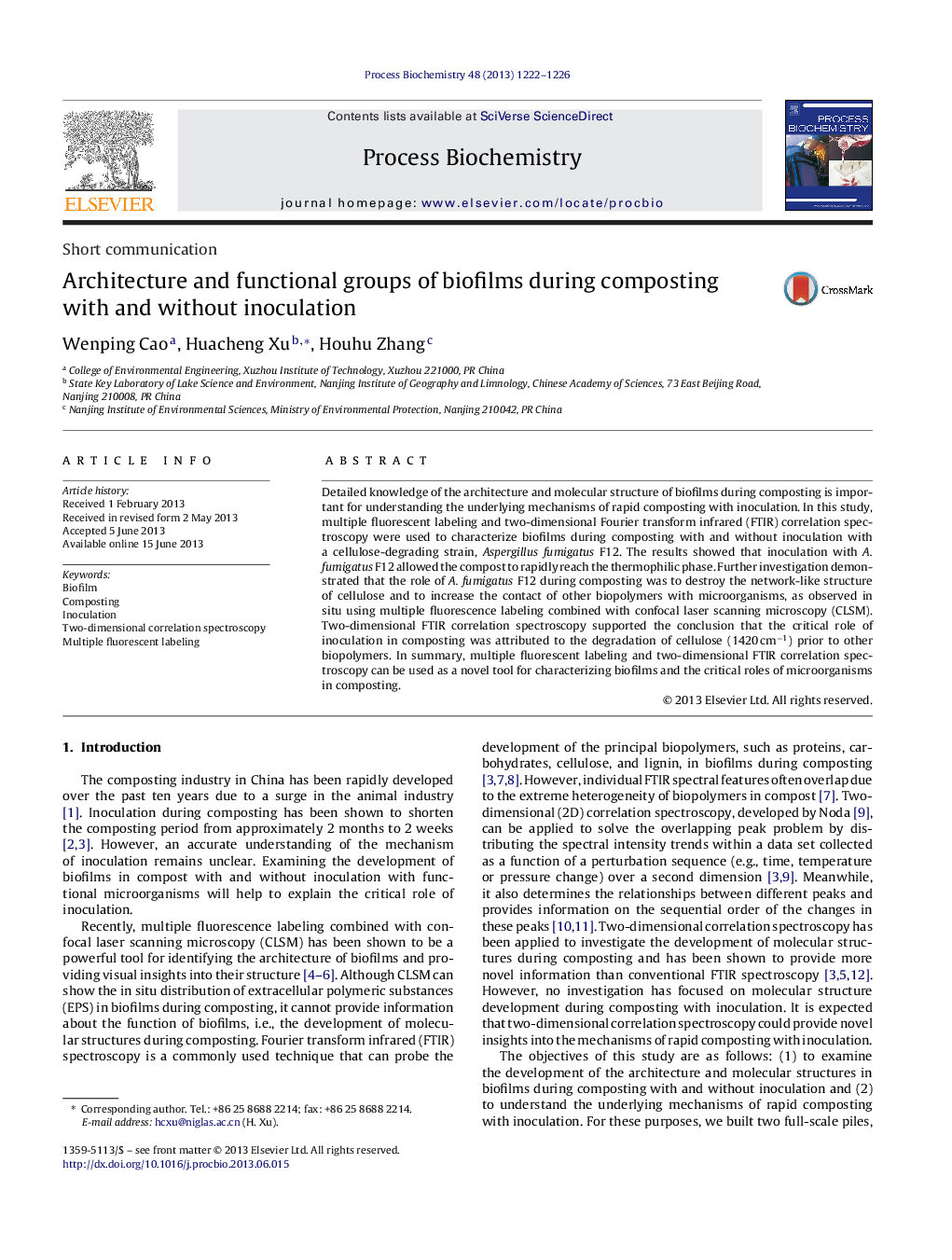| Article ID | Journal | Published Year | Pages | File Type |
|---|---|---|---|---|
| 10235798 | Process Biochemistry | 2013 | 5 Pages |
Abstract
Detailed knowledge of the architecture and molecular structure of biofilms during composting is important for understanding the underlying mechanisms of rapid composting with inoculation. In this study, multiple fluorescent labeling and two-dimensional Fourier transform infrared (FTIR) correlation spectroscopy were used to characterize biofilms during composting with and without inoculation with a cellulose-degrading strain, Aspergillus fumigatus F12. The results showed that inoculation with A. fumigatus F12 allowed the compost to rapidly reach the thermophilic phase. Further investigation demonstrated that the role of A. fumigatus F12 during composting was to destroy the network-like structure of cellulose and to increase the contact of other biopolymers with microorganisms, as observed in situ using multiple fluorescence labeling combined with confocal laser scanning microscopy (CLSM). Two-dimensional FTIR correlation spectroscopy supported the conclusion that the critical role of inoculation in composting was attributed to the degradation of cellulose (1420Â cmâ1) prior to other biopolymers. In summary, multiple fluorescent labeling and two-dimensional FTIR correlation spectroscopy can be used as a novel tool for characterizing biofilms and the critical roles of microorganisms in composting.
Related Topics
Physical Sciences and Engineering
Chemical Engineering
Bioengineering
Authors
Wenping Cao, Huacheng Xu, Houhu Zhang,
